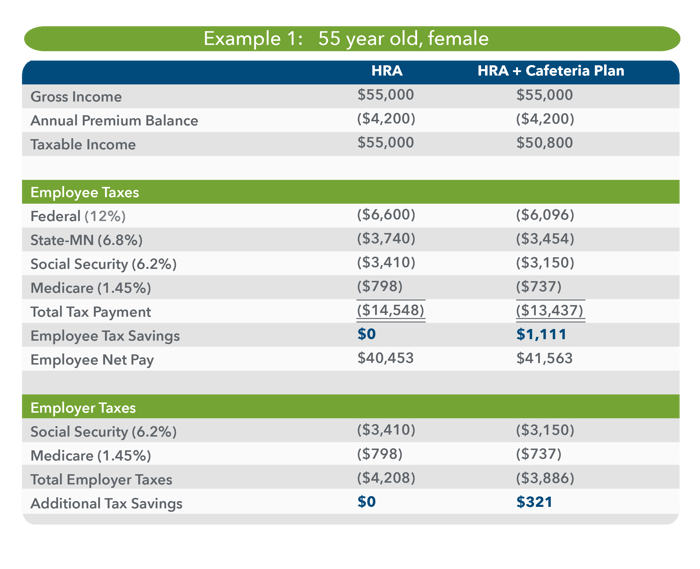
Combine your ICHRA with a Cafeteria Plan for maximum tax advantages.
Both employers and employees benefit by paying lower taxes to help keep health care costs more affordable. In some instances, the savings
can be significant.
Click here to download the full article and enjoy offline
Putting more money into employee paychecks by reducing the cost of healthcare is important to all employers. The good news is that there are more ways to do this than ever before. Learning the options to maximize employee paychecks and reduce employer taxes is a win-win for everyone.
What are ICHRAs and QSEHRAs
ICHRAs (Individual Contribution Health Reimbursement Arrangements) became available on January 1, 2020, and joined QSEHRAs (Qualified Small Employer Health Reimbursement Arrangements) as the two types of HRA’s that allow employers to reimburse employees for individual health insurance as a form of employer sponsored health insurance. The difference between the two options are based on company employee size, desired contribution sizes, and the amount of flexibility desired to create different job classes and reimbursement amounts per person. These reimbursements through the HRA are deductible to the employer, and income tax free to the employee. Both are game changers for employers, allowing them to set a budget per employee per month and thereby reimburse employees for the choices they make for individual or family health insurance, dental insurance, vision insurance, and other qualified medical expenses.
Section 125 of the Internal Revenue Code, also known as a “Cafeteria Plan” allows employees to pay certain expenses on a pre-tax basis, such as insurance premiums and medical or dependent care expenses, thereby reducing their gross income. This in turn reduces an employee’s State, Federal and FICA (Social Security and Medicare) taxes. Lower gross income also allows the employer to pay a lower amount of matching FICA taxes. Cafeteria Plans have traditionally been used to allow group health insurance premiums, both employer paid and employee paid, to be paid pre-tax.
"An HRA combined with a section 125 Cafeteria Plan provides maximum tax advantages."
As more employers are leaving the traditional group health insurance market and instead choosing to go the ICHRA or QSEHRA model, ensuring that all the tax advantages are utilized is an important and sometimes overlooked component. An employer can do a stand-alone HRA, but an HRA combined with a Section 125 Cafeteria Plan provides maximum tax advantages.
Adopters of HRA’s are falling into two camps. First there are companies who have long offered employee benefits in the group market and are changing their model. The second category of HRA adopters are employers who are offering employee benefits for the very first time to either all of their full-time employees or expanding benefits for the first time to certain classes of employees that have traditionally not been benefit eligible (like part-timers or seasonal employees). These first-time benefit employers may not be as knowledgeable on how to use a Section 125 plan to lower taxes from qualified insurance premiums and other approved expenses and may therefore miss out on its advantages for themselves and their employees.
When individual insurance premiums exceed the amount of the employer contribution, an employee whose employer has a Cafeteria Plan can submit the remainder of the insurance premium for pre-tax deductions to gross income.
"...an employee whose employer has a Cafeteria Plan can submit the remainder of the insurance premium for pre-tax deductions."
This results in substantial additional tax savings to both the employer and the employee.
Let’s look an example.
A single female employee aged 50 in Minnesota with a $55,000 annual salary has a $250 a monthly employer contribution towards her insurances through an HRA. In her case, she decides on a benefit rich “gold” health insurance plan, along with a dental and vision insurance plan. Her combined monthly premium is $600 a month, significantly more than the $250 employer contribution. Therefore, because her employer allows for Section 125 Cafeteria Plan deductions, the extra $350 in premium she pays every month above the employer reimbursement can be deducted directly from her gross income, for a lower taxable income. The result is the employee pays $1,401 a year less in taxes, and the employer also pays $321 a year less in payroll taxes.

When insurance premiums are too high
Employees can use employer-funded ICHRA’s or QSEHRA’s to be reimbursed for individual health insurance, dental insurance, vision insurance and other qualified medical expenses. Through these HRA’s, employers set an allowance to reimburse employees on a monthly basis. Should the employer reimbursement amount be less than an employee’s total premium, the unreimbursed amount of the premium can be reported through a Section 125 plan for a lower tax amount and higher take home income.
The logistics of recording this Section 125 plan can vary from company to company. One method is it can be documented by your ICHRA or QSEHRA administrator and reported to the employer. Then the employer can record it on their payroll as a non-cash deduction for a Section 125 expense. This will lower the employee’s taxable income, without lowering their paycheck.
New models for health care financing will continue to evolve, and the guidelines to embrace these new models will continue to be adopted by employers wanting to maximize health care premium value for themselves and for their employees. Stay tuned.
Written by Margaret Lett, PhD.
Dr. Lett has 15 years experience in healthcare financing. She has a PhD in Economics and currently resides in Minneapolis, Minnesota.'
Click here to download the full article and enjoy offline
Ready to Discuss Your Options? Contact Benafica
At Benafica, it’s our mission to educate companies and individuals on the healthcare benefits available to them, so they can make the coverage decisions that best meet their needs. If you’re ready to learn more about your business’s health benefits options, feel free to give our team a call today at 651-287-3253 or send us a message, and we’ll be in touch promptly.
Recent
Search
Topics
- Employee Benefits (24)
- HRA (16)
- Insights (12)
- ICHRA (9)
- Employer (8)
- News (8)
- QSEHRA (7)
- COBRA (4)
- Individual Benefits (4)
- Health Insurance Carrier Updates (3)
- Cafeteria Plan (2)
- Individual Life Insurance (2)
- Section 125 Plan (2)
- Videos (2)
- Words From Our Founder (2)
- Agents (1)
- Benafica (1)
- Dental (1)
- GCHRA (1)
- HSA (1)
- Legislative Updates (1)
- Lifestyle Savings Account (1)
- Medicare (1)
